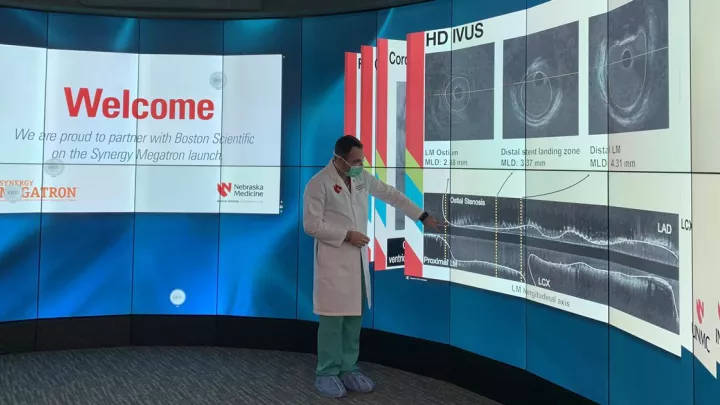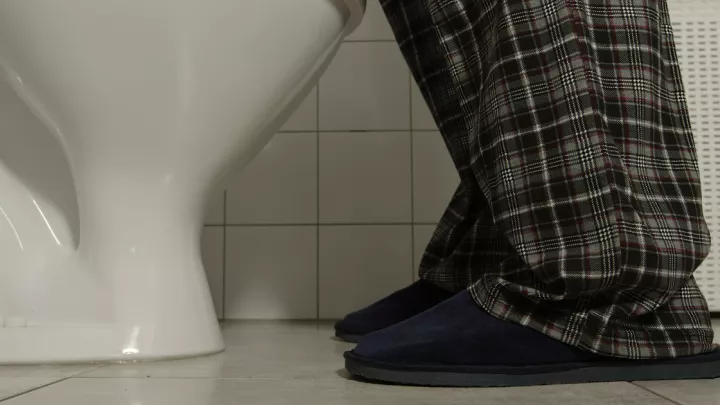How to choose an at-home heart rate monitor

You may have heard about the latest wearable technology that can help monitor your heart's rate and rhythm. They can alert you when your heart rate is too fast, too slow, or irregular. Popular devices like KardiaMobile (AliveCor), KardiaMobile 6L, certain Fitbits and Apple watches can even perform electrocardiogram (EKG or ECG) readings and share electronic copies.
With 6 million adults in the U.S. living with atrial fibrillation (AFib) today, it's tempting to count on personal-use wearables to tell us what's going on with our heart. While it seems incredible that we can get reassurance from our wrists that all is well, are commercial EKG devices up to the task?
Commercial vs. medical-grade devices – what's the difference?
An EKG measures the heart's electrical activity. An electrical impulse travels through the heart, directing the muscle to pump blood to the body as the heart beats. By examining an EKG, a doctor can see what is happening throughout the heart.
The dawning of commercial technology has evolved quickly from measuring motion (steps or activity), to monitoring heart rate, and now to screening heart rhythm. How do these commercial devices compare to medical devices a doctor would use?
Here are a few distinctions that may be helpful to understand the differences.
1. Diagnostic accuracy and function are not the same.
Commercial devices offer short rhythm reports that may be convenient but don't detect the fine detail of irregular rhythms. "When a medical-grade device is used in a doctor's office, we look at electrical impulses of the heart from 12 points of view," says Shane Tsai, MD, Nebraska Medicine cardiac electrophysiologist. "Commercial devices usually only look at the electrical impulse from one point of view. Only some devices will give you even a three-lead or six-lead perspective."
A commercial device will generally make determinations through an artificial intelligence (AI) algorithm showing one of three results:
- Regular – presumed sinus (normal) rhythm, but can be abnormal (atrial flutter, for example)
- Irregular – possible AFib, but can be normal (premature beats, for example)
- Unknown – could be normal or abnormal (often a noisy recording)
On the other hand, medical-grade devices measure many things in closer detail – including the intervals between heartbeats – giving doctors a more complete look at what's going on. By looking at the rhythm strips, a heart specialist can identify specific characteristics that commercial devices are not designed to accurately diagnose – conditions like AFib and palpitations like premature atrial contractions (PAC) and premature ventricular contractions (PVC), for example. "It's important to distinguish exactly what a patient is experiencing because it makes a difference in a diagnosis and potential treatment," explains Dr. Tsai. "While a convenient tool, commercial devices are not always clever enough to pick up the nuances for a proper diagnosis."
2. Commercial devices are not FDA approved.
"Commercial wearable devices are not FDA approved for diagnostic purposes," says Dr. Tsai. "They are meant to be a supplement for wellness, so it's important that patients understand they are not meant to replace prescription monitors."
Are commercial devices still useful for general heart health monitoring?
While not recommended for making a diagnosis, commercial wearables can still be helpful. "I do use them at times as a screening tool for patients that have known disease as a supplement to track symptoms," says Dr. Tsai. "Due to their limitations, however, I don't use them as a diagnostic tool. We worry patients may have a false sense of security with commercial wellness devices as they can be fooled by false positive and negative results."
On the other hand, medical-grade monitors send specific reports that will be read by a doctor leading to a diagnosis. The preferred type depends on a patient's particular needs:
- Short-term holter monitors worn for 24 to 72 hours
- Long-term holter monitors worn for 10 to 14 days
- Cardiac event monitors worn for 2 to 4 weeks
- Mobile telemetry monitors with nearly live capabilities
"There are times when commercial devices can be useful for patients if they live in rural areas and used as a starting point for further consultation," says Dr. Tsai. "For some patients, we can use them as a tool for reassurance or ongoing monitoring, but a misdiagnosis can be life-altering, so I recommend patients follow up with their doctor on the kinds of readings they're seeing."
Further study is needed to determine the best use of commercial wearable devices. While there's much potential for them in the future, the question remains how the medical community would manage them as they evolve. In the meantime, use them wisely as a wellness tool, not as a substitute for a proper diagnosis or medical care.







